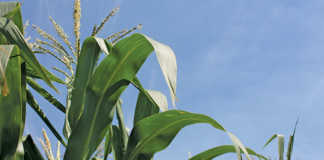The rand ended 2013 significanlty weaker and resumed its weakening trend in 2014. By 28 January, the rand was trading at R11,07 against the US dollar (US$); R15,14 against the Euro (€); and R18,38 against the British pound (£). A year ago, the rand was trading at around R8,75 against the US$, R11,63 against the € and R14 against the £.
Canegrowers executive director, David Wayne, expected the rand to remain relatively weak and possibly weakening even further during 2014, particularly in the run-up to the elections. “In addition, there are not strong signs for a major economic recovery worldwide and this subdued outlook will continue to have a negative influence on the rand, at least in the short term,” Wayne said.
John Cairns, currency strategist at Rand Merchant Bank, said other negative factors included South Africa’s huge current account deficit, electricity supply concerns, impending strike action and recent police shootings. In the agriculture sector, rand weakness offers both advantages and disadvantages.
“The weak rand is great for fruit exports. We mainly export to the UK and EU, where the rand is 20% to 25% weaker compared with a year ago, while trade with the Middle and Far East is conducted in US dollar terms,” said Jacques du Preez, Hortgro Services product manager: stone and pome fruit. On the downside, the rand’s slump was increasing the cost of imports such as oil and fertiliser, while shipping costs were also paid in dollars and were linked to the dollar-based oil price.
Du Preez said that while he expected a ‘dramatic’ increase in shipping costs and a ‘big increase’ in input costs such as fuel and fertiliser, these should not outweigh the benefits of exporting on a weaker rand. A blow to the industry, however, was that the volume of fruit available for export had decreased. This was mainly due to a severe hailstorm in the Western Cape in November and heavy rain in January, which caused quality issues in stone fruit.
This year, apricot, nectarine and plum exports were estimated to shrink by 14%, 10% and 5% respectively, compared with the previous season, while peach exports should grow 17% due to new orchards coming into bearing. “We expect apples, pears and plum exports to be reduced by 8,6%, 11,1% and 5%, respectively. Had it been a normal production year, we would have seen quite a big increase in exports,” Du Preez said.
Agri SA senior economist Dawie Maree said the weaker rand would have winners and losers. “The grain industry might experience higher prices, given the fact that grain prices are derived from international prices. This is positive for grain farmers, but the meat and milk industry will suffer if their product prices do not increase in line with the feed price increase,” he said.
In addition, the majority of inputs, such as technology and agricultural machinery, were either imported or prices were derived from international prices, such as fertiliser and fuel. “For every one cent increase in the diesel price, the spending on fuel in the agri sector increases by R10 million/ annum,” Maree said. Grain SA senior economist, Corné Louw said: “SA imports up to 70% of local fertiliser needs, and fertiliser makes up about 40% of a grain and oilseed producers’ variable production costs. About 99% of active ingredients needed for agro-chemicals are also imported.”
From December 2012 to December 2013, the rand depreciated by 20%, from R8,63/ US$ to R10,36/US$. “International fertiliser prices decreased during this period, but due to the exchange rate, local producers could not benefit from international price decreases. Local wholesale prices of diesel increased by 15,8% from January 2013 to January 2014, from R11,11/l to R12,87/l. The weakening in the exchange rate alone contributed about R1,20 to this increase,” he said.
The weaker rand will push up winemakers’ total production cost by 10% from the 2012 to 2013 harvest, said VinPro agricultural economist Pieter van Niekerk. “World demand for wine is once again saturated and while the EU has a normal size harvest this year, South Africa has an exchange rate advantage. We can be profitable at low price points.”
Van Niekerk expected growth to be driven by bulk wine exports, although he was not as bullish as in 2013 because the 2014 harvest was predicted to be a bit smaller. “SA should be worried in the long term. As an industry, one should not get branded as a supplier of cheap, value-for-money at a low price.
We’ve done a lot to establish Brand SA and there’s still a problem that our average prices are not at sustainable levels, and we see this in the low profit level of farms and cellars.” VinPro expected the rand to stay weak at R10/ US$ to R11/ US$ for the next five years.












